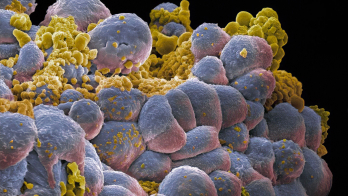The LHC is not yet up and running, but already physicists and engineers in Europe, Japan and the US are working towards upgrades for the machine. In the US, the LHC Accelerator Research Programme (LARP) reached a major milestone in July when Brookhaven National Laboratory (BNL) successfully tested the first long racetrack shell (LRS) magnet, named because of its shape. The LRS magnet is a precursor of an upgraded superconducting quadrupole planned for the LHC.

Image credit: Paolo Ferracin, Lawrence Berkeley National Laboratory.
The US group is working on strategies to upgrade the inner triplet quadrupole magnets that perform the final focusing of the particle beams prior to collision. These magnets are close to the interaction points, so they must be built to withstand high doses of radiation. An upgraded, higher-luminosity LHC will mean a hotter environment for these magnets.
Because upgraded inner triplets will need to operate at both a higher temperature and magnetic field, the US team, from BNL, Fermilab and Lawrence Berkeley National Laboratory, is evaluating niobium-tin (Nb3Sn) technology for the magnet coils, rather than the well-established niobium-titanium that is used in the current LHC magnets. However, the material is difficult to work with. The Next European Dipole research activity is also investigating Nb3Sn conductors for use in upgraded LHC magnets as part of the Coordinated Accelerator Research in Europe programme.

Image credit: BNL.
The LRS magnet is the first accelerator-style Nb3Sn magnet to be fabricated significantly longer than 1 m. At 3.6 m long, it approaches the length that will be needed for the LHC. BNL fabricated the coils for the LRS, and LBNL designed and fabricated the support structure. Fermilab contributed project management, conductor characterization, insulation development and insulated cable for a practice coil.
The first of these magnets, LRS01, was tested in July at BNL. “Training” the magnet (or subjecting it to repeated quenches) started above 80% of what is estimated to be the magnet’s maximum current density of 10.6 kA. After five quenches, the current reached 91% of the estimated maximum, corresponding to a coil peak field of 11 T.
The LRS01 magnet provides key information on the fabrication of long Nb3Sn and the optimization of shell-based support structures. The next step for LARP will be to build the Long Quadrupole. This will be the first-ever 4 m-long Nb3Sn accelerator-type magnet of its kind.








